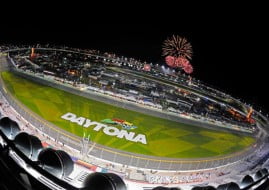Lola T70 - Independent Race Car Which Could Beat Famous Names
If you are not familiar with the name ‘Lola’, you ought to be. Lola Cars International Ltd. is one of the last true independent racing car manufacturers which was a consistent participant in sports and endurance car racing for almost 50 years.
Unconventional approach
Lola was founded in England in 1958 but it produced its first racing car in the mid-’60s. Its founder and owner Eric Broadley was a very interesting character. Born in 1928, Broadley was an acclaimed amateur racer and racing car builder. However, he was trained as an architect, not an engineer, and, therefore, his unconventional approach to building racing cars often proved to be better than that of the others.

Lola T70 Spyder Mk1 cutaway
Broadley was one of the guys behind Ford GT40
As soon as he started his own company in 1958, he became successful in producing single-seaters for Formula Junior, Formula 3 and Formula 2. His work drew attention from Ford in the early ’60s, as he was looking for a partner in building a GT/endurance racer to battle Ferrari in Le Mans. Starting in late 1963, the Lola-Ford project eventually resulted in the famous Ford GT40 which boasted with Eric Broadley’s basic technical layout and ideas which remained unchanged even after Ford took over the whole project.

Lola T70 Spyder Mk2 back side
Classic “powerful engine in a light body” mantra
However, that was not the end of Broadley’s storyhe had leftovers from the GT40 project and access to powerful Ford and Chevrolet V8 engines. At that point in time, there was nothing like an American small block V8 with lots of power and, more importantly, lots of torque. Broadley realized that if he put such a powerful engine into a lightweight chassis, it could prove to be incredibly successful. So he contacted his friend and famous car and motorcycle racer John Surtees and started working on the Lola T70 project.

Lola T70 Spyder Mk2 with the body panels off
Lola T70 – World’s fastest sports car
The results was fascinating: a racing car weighing a little over 600kg capable of producing 500bhp. As you can imagine, the performance was sublime and for a brief period of time, Lola T70 was the fastest sports car in the world. The initial success came very quickly in 1965 when Lola won the Laguna Seca race. All of the motorsport world started talking about the new sports car with its fantastic performance, and Broadley began receiving orders from the customers and continued to develop the car even more.

Lolas at the Can Am race
Success in various series
First, the coupe body was produced and the basic shape changed in order to have better aerodynamics. Secondly, Ford engines were no longer used and the Chevrolet small block with multiple carburetors was installed. It proved to be more reliable and easier to fix. So in 1966, Lolas won five of six races of the season. After 1967, no more roadsters were produced as Lola shifted to coupe bodies only because closed cars had better aerodynamics.

Lola T70 Mk3 with a closed body
The end of the racing career
In the late ’60s, the rules were changed, but Lola T70 evolved further, continuing to be more competitive. The biggest success of this model came in 1969 when Sunoco Lola T70-Chevrolet won the 1969 24 Hours of Daytona with a 1-2 finish. Lolas also won a few of the less famous but nonetheless important races that season. However, the end was in sight because Chevrolet stopped producing racing engines in 1970 and Lola was left without dependable and powerful engines. They did test the T70 chassis with an Aston Martin engine but the results were disappointing.
Video : Le Mans onboard Lola T70
The racing career of the Lola T70 came to an end in the early ’70s, although Lola racing cars are still active today. The T70 made its mark in the racing history as a great independent racing car which beat the biggies such as Ferrari, Porsche and Ford, using clever engineering, outsourcing components, and very little funding. Lola produced around 100 T70 chassis, and today, all of those are valuable pieces of racing history.

Lola T70 GT Mk3
Photos: autowp.ru, stevemckelvie.wordpress.com.






